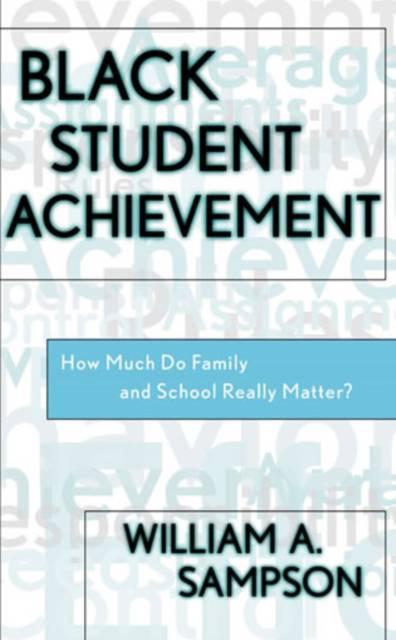
- Afhalen na 1 uur in een winkel met voorraad
- Gratis thuislevering in België vanaf € 30
- Ruim aanbod met 7 miljoen producten
- Afhalen na 1 uur in een winkel met voorraad
- Gratis thuislevering in België vanaf € 30
- Ruim aanbod met 7 miljoen producten
Zoeken
€ 60,45
+ 120 punten
Omschrijving
Improving the quality of public schooling in America has been a consuming issue for over two decades, but improving the education of poor students and particularly non-white students has been at the center of this issue as long as it has existed. After trying educational vouchers, charter schools, increased testing, school uniforms, and decentralized decision-making, some administrators are concluding that changing schools is not the answer. This is the line of reasoning behind Sampson's study of 12 poor black families in a Chicago suburb, which showed that despite consistencies in race, income, and neighborhood, student performance varied across the board. The author concludes that the difference is found in homes where values such as discipline, order, structure, responsibility, and preparing for the future were emphasized. This book focuses on the potential of the family to do what generations of reform could not and should appeal to anyone involved with public policy, racial, or social issues.
Specificaties
Betrokkenen
- Auteur(s):
- Uitgeverij:
Inhoud
- Aantal bladzijden:
- 248
- Taal:
- Engels
- Reeks:
Eigenschappen
- Productcode (EAN):
- 9780810842953
- Verschijningsdatum:
- 11/06/2002
- Uitvoering:
- Paperback
- Formaat:
- Trade paperback (VS)
- Afmetingen:
- 151 mm x 230 mm
- Gewicht:
- 331 g

Alleen bij Standaard Boekhandel
+ 120 punten op je klantenkaart van Standaard Boekhandel
Beoordelingen
We publiceren alleen reviews die voldoen aan de voorwaarden voor reviews. Bekijk onze voorwaarden voor reviews.











